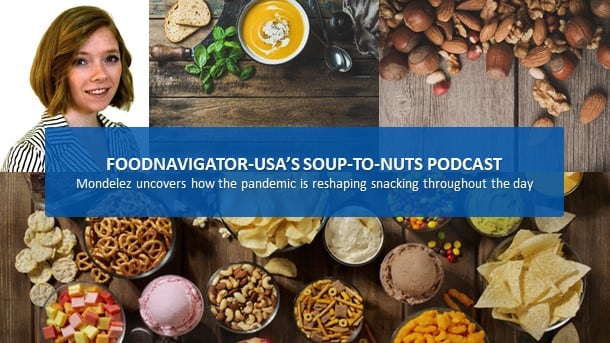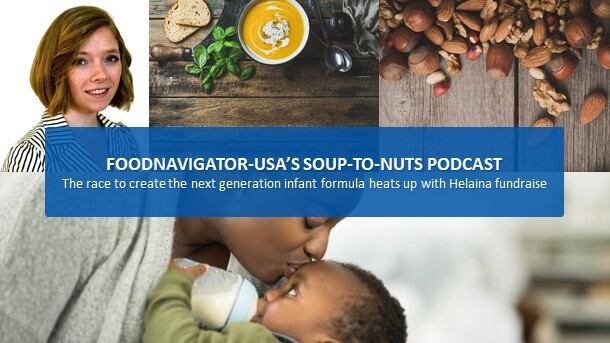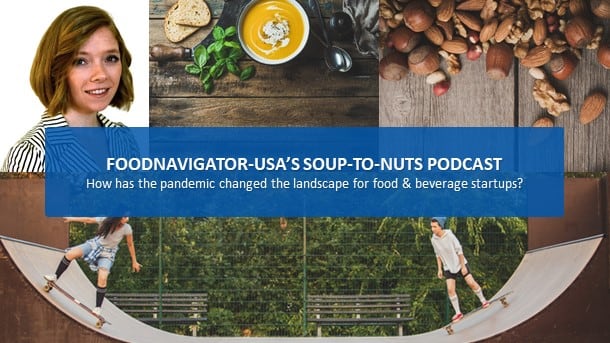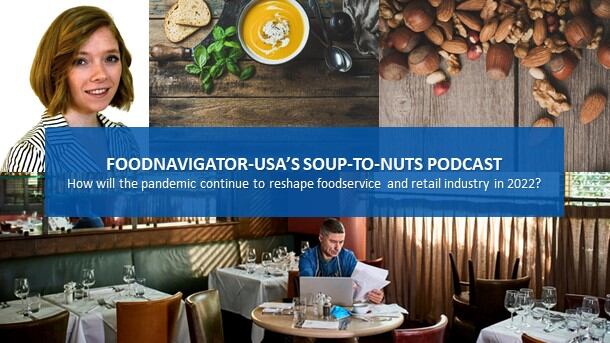Quickly becoming an industry benchmark, Mondelēz International’s recently released third annual State of Snacking report analyzed thousands of consumer surveys from across 12 countries to find 79% of people globally define “snack” more broadly now than pre-pandemic to include more or different types of foods, eating occasions and other elements. This is even higher in the US, where 84% of consumers said their “snacking palettes have evolved.”
Where consumers discover and purchase snacks is also expanding, according to the report, which found 55% of consumers reporting being inspired by social media to try a new snack in 2021 – up 5% from the previous year. Likewise, 74% expect to buy snacks anywhere they want and 80% expect to be able to buy them whenever they want – elevating the importance of an omnichannel marketing and distribution strategy.
As important as taste and convenience are for today’s consumers, they aren’t the only factors they consider when selecting what to eat or where shop. Mondelēz also found consumers increasingly look for products and companies that align with their values.
To better understand what is behind these shifts, how they are influencing purchases and how snack makers and retailers should respond strategically, Nick Graham, global head of insights and analytics at Mondelēz International, joins this episode of FoodNavigator-USA’s Soup-To-Nuts Podcast.
[Editor’s note: Never miss another episode of FoodNavigator-USA’s Soup-To-Nuts podcast – subscribe today.]
The expanded role of snacking
Even before the pandemic, snacking was on the rise to fuel our on-the-go lifestyles. And while lockdowns may have paused the ‘go’ part of many people’s lives, it didn’t eliminate the daily hustle and bustle – rather it simply shifted it along with the need for fast options that could be squeezed in between video meetings instead of soccer games and Saturday morning errands or used to carve out a moment of rest or to socially connect with others.
“More than half of Americans now say that they are snacking regulatory, which is I think 10 points or something higher versus two years ago, and it is particularly even higher among Gen Z and Millennials,” Graham said.
He explained the uptick is due in part to people looking for comfort or stress release in today’s uncertain world, and because of the literal shift in many people’s routines during the pandemic when they began working from home, which created new snacking occasions – especially in the morning.
According to Mondelēz’s State of Snacking report, younger consumers are more likely to replace meals with snacks, including 75% of Gen Zers and 69% of Millennials compared to 62% globally.
Another “new snacking occasion” to emerge during the pandemic is the evening, either as a way to mark the end of another work-from-home-day or as a treat to share with others as a gift.
The extent to which consumers adopt these new snacking occasions, and how they choose to fill them, also depends on their life stage, according to Mondelez’s research.
For example, it found Gen Zers were more likely to snack out of boredom or because they wanted a new experience, while Millennials were more focused on positive nutrition.
Balancing sustenance and indulgence
As consumers’ definition and adoption of snacking expands, Graham says they are striking a balance between sustenance and indulgence with dividing lines falling in the middle of the day and between generations.
He explained that while enjoyment is always pivotal to snacking, consumers who reach for a snack in the morning are more likely to opt for something healthier with the survey finding 28% of consumers who snack before breakfast prefer sustaining versus 11% who want indulgent options. This is the same for 29% who snack to replace breakfast and the 35% who snack between breakfast and lunch versus 18% and 32% respectively.
Afternoon and evening snacks favor indulgent with 42% of snackers looking for something indulgent between lunch and dinner versus 35% who look for something sustaining. Likewise, 38% of after dinner snackers want something indulgent versus 24% who want something more sustaining, according to the report.
Generationally, Graham said, older consumers seeking indulgent options also look for portion control and better-for-you snacks with less sugar and fat and more positive nutrition, including products that are organic, natural, fortified, offer fiber and protein.
Shoppers want snacks across channels
With more snacking occasions to fill and a desire for more variety, consumers are looking for options in more places – including online, which Mondelez found not only offers safety and convenience but also a new path for discovery and personalization.
Many shoppers new to ecommerce during the pandemic flocked to it primarily for safety reasons, but now that in-person shopping is less risky many are sticking with online shopping because it is convenient, Graham said.
He also noted that when it comes to snacks, online shopping allows consumers to find novel products that might not be typically stocked in brick and mortar stores near them.
In the rush to explore digital marketing and sales, manufacturers and retailers shouldn’t forgo old school advertising tactics, like direct mail and television, which Mondelez’s survey found gained relevance in the past year over 2020.
For example, 27% of consumers used direct mail to discover new snacks in 2021— an increase from 22% the year before and just under the 31% who cite social media as a source for discover last year.
Regardless of the avenue for reaching consumers, Graham recommends snack manufacturers that focus messaging on the joy their products offer and to personalize messages as much as possible to help cut through the advertising clutter.
To learn more about Mondelez’s findings, check out the full report – as well as the previous two – at mondelezinternational.com/stateofsnacking.




